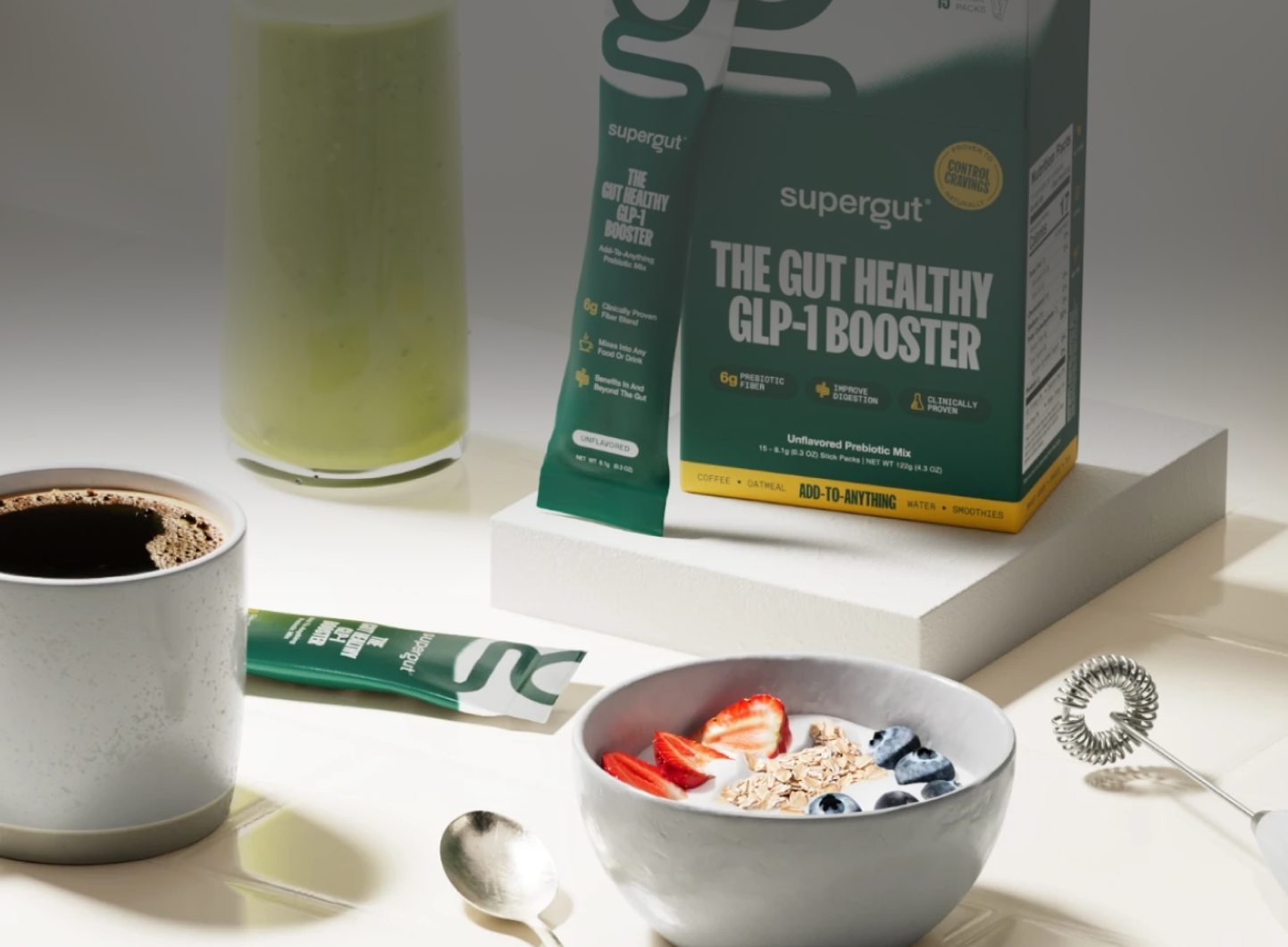Guide to Consumer Needs on GLP-1
How brands can capture the booming satiety-driven market
Download the ebook

In this eBook:
- The New Demand: Why high-protein, fiber-rich, and sugar-free foods are surging
- Carbs Are Back: The surprising comeback of bagels (+216% YoY) & tortillas (+212% YoY)
- Major Brand Moves: How Conagra, Nestlé & Supergut are innovating for GLP-1 consumer
- Consumer Priorities: Why “gut health” is now outranking “low-carb” in food choices
- Actionable Strategies: How to reformulate, reposition, and own the GLP-1 space

The Consumer Shift is Here
- High-protein, fiber-rich, and sugar-free foods are in high demand
- Carbs are making a comeback, with bagels up 216% YoY and tortillas up 212% YoY
- Traditional snacking is evolving toward functional, portion-controlled options
- Gut health is now a higher consumer priority than low-carb diets
- GLP-1 users are seeking satiety-driven snacks and meals with high fiber and protein
- Sugar-free and clean-label product demand has increased by 45.8% YoY

New Growth Areas for Food & Beverage

How Brands Can Stay Ahead
- Reformulate products to emphasize satiety, incorporating protein, fiber, and prebiotic ingredients
- Reposition messaging to highlight balance, gut health, and sustained energy rather than outdated diet claims
- Own the recipe space by providing portion-controlled meal ideas that integrate GLP-1-friendly products
Understanding the GLP-1 market: key insights for growth
The GLP-1 market is transforming global healthcare, driven by rising obesity and diabetes rates among patients worldwide. According to recent research, more than 1 billion people are projected to be affected by obesity by 2030, a trend that’s reshaping the pharmaceutical industry and food and beverage markets alike. The World Health Organization highlights that the prevalence of obesity is rapidly increasing among children and adolescents, underscoring the urgency of effective treatment of obesity.
GLP-1 receptor agonists, such as semaglutide (marketed under Ozempic) and oral versions now in clinical trials, are reshaping both the pharmaceutical and food industries. These medications improve blood sugar control and promote weight management, offering significant potential for patients with obesity and diabetes. The FDA has approved several injectable and oral options, expanding access and encouraging companies to invest in manufacturing, development, and new route of administration innovations.
Market growth, forecast, and future potential
The global GLP-1 market is expected to grow significantly during the forecast period, projected to reach several billion USD in market size by 2032. Market research indicates this growth is fueled by increasing consumer awareness, medical advancements, and emerging nutrition trends linked to diabetes and obesity. GLP-1-based therapies have demonstrated safety and efficacy in clinical trials, showing improved results in weight management and cardiovascular disease risk reduction.
Key players in the GLP-1 market, including major pharmaceutical companies, are expected to expand coverage, strengthen their supply chain, and optimize pricing strategies. The administration of GLP-1 therapy, whether oral or injectable, is becoming a core focus for healthcare services and insurance providers, particularly as patients demand access to effective treatment options.
Research insights and industry developments
Recent developments highlight how artificial intelligence and medical devices are accelerating research and development in GLP-1 medications. Clinical studies conducted across diverse populations reveal that side effects such as nausea are generally manageable, reinforcing the strong safety and efficacy profile of these medications. The administration of semaglutide and other glucagon-like peptide analogs has proven highly effective for obesity treatment, offering substantial opportunity for companies aiming to capture market share in this rapidly growing space.
The forecast for the GLP-1 market suggests continued expansion, based on information from industry reports and financial data. The potential of GLP-1 in obesity treatment and diabetes management positions it as one of the largest market share segments in the global pharmaceutical landscape. With changing consumer priorities, ongoing regulatory advancements, and expanding medical services, the GLP-1 market is poised for sustained market growth and innovation across healthcare, nutrition, and pharmaceutical companies.
FAQs about GLP-1
The effects of GLP-1 therapy are far-reaching across healthcare, influencing both medical and nutrition markets. According to global clinical data, more people are turning to GLP-1 treatments to help stabilize sugar levels and support long-term weight management. The number of patients adopting GLP-1 medication continues to climb, reflecting the category’s impact on disease management and preventive care.
The GLP-1 market is currently one of the fastest-growing categories in the pharmaceutical industry, based on recent clinical trials and strong consumer awareness. A growing number of pharmaceutical companies are expanding their portfolios to meet global demand, supported by strong financial performance across the GLP-1 sector. Industry events also highlight the adoption of GLP-1 globally, showing how related market segments are expanding rapidly.
Competitive pricing strategies are emerging as manufacturers seek to balance innovation with accessibility across various regional markets. GLP-1 treatments are shaping the future of obesity and diabetes care, and industry events continue to showcase how collaboration and transparency are driving affordability. These combined dynamics, market maturity, financial performance, and consumer awareness, underscore the growing opportunity for sustained market growth.